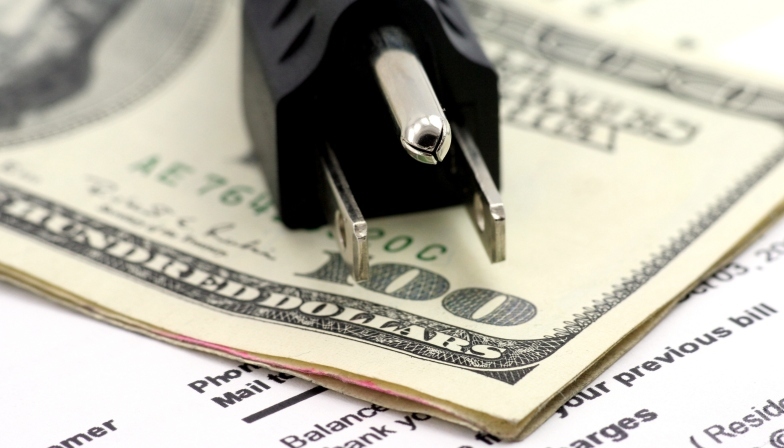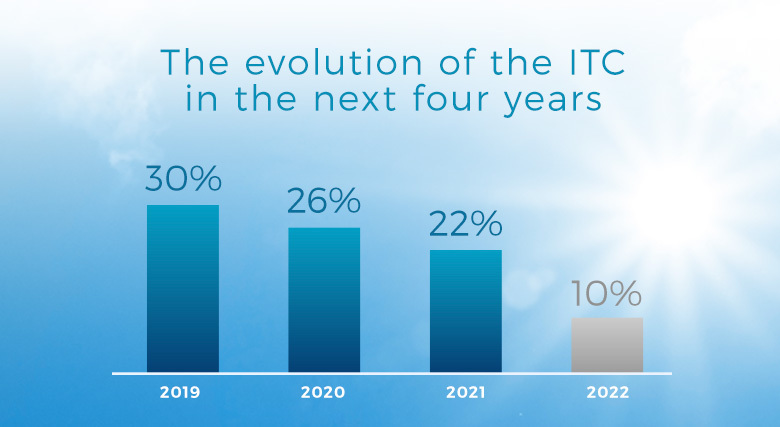
The US government wants to move the country away from expensive and dirty fossil fuel. It’s prepared to reward those homeowners and businesses who invest in renewable power technologies like solar.
A number of government incentives exist and are designed to speed up this transition to a greener and more sustainable future. One of the most popular subsidies is the Federal Solar Investment Tax Credit (ITC) – a generous incentive credited with helping the solar industry grow by more than 1,600% since the program was first introduced in 2006.
That’s a compound annual growth rate of 76%.
But what is the Solar Investment Tax Credit? And how does it work?
Under this incentive, homeowners and businesses are allowed to claim a one-time 30% tax credit when they install solar photovoltaic (PV) panels on their properties. As a result, their clean power investments automatically become 30% cheaper than they would otherwise be.
Note that this is much better than a standard deduction in which you reduce your taxable income by the total cost of whatever you’ve purchased.
Here’s what the Federal Solar Tax Credit looks like in action:
In effect, your PV system ends up costing $7,000 once the tax credit is applied – instead of the original ticket price of $10,000.
These are real, tangible savings that make going solar even more affordable than it already is.
Not only does this 30% tax credit dramatically reduce the upfront cost of going solar, but it also shortens the payback period of installing PV panels. At Bright Planet Consulting, for example, our clients’ solar installations consistently break even in under 7 years – thanks to this incentive program.
And unlike with many government subsidies, there is no upper limit to how large a tax credit you can claim:
However….
2019 is the last year that this historic tax credit will be available at the 30% rate. Below is the payout schedule for 2020 and beyond.

As with most incentive programs, the Investment Tax Credit is designed to help cutting-edge technologies (like solar PV) become more mainstream. As such, this subsidy is regressive – meaning the payouts and benefits diminish over time:
And if you wait too long, you’ll miss out on the program entirely.
Because solar power is already cheaper than grid electricity in most states (including California), this incentive has largely achieved its intended purpose making sense to scale back the program now that PV technology is cost-competitive with dirtier forms of power generation – like oil, gas and coal.
Fortunately, however, there is still time to take advantage of this federal incentive program – while it still lasts.
But you have to act quickly.
Standard disclaimer: We don’t provide tax or legal advice. And it’s always best to consult with a certified professional before making any major decisions. According to the IRS and Department of Energy, below are the main eligibility requirements for claiming the 30% Solar Investment Tax Credit:
And probably most important, your solar PV system must become operational by December 31, 2019 in order to be eligible for the 30% tax rate.
Because it takes some time to design, commission and install a standard solar PV system, it’s important that you act now. If an installation you commission today doesn’t become fully operational until January 1, 2020 or after – you’ll automatically be bumped down to the lower tax credit.
As such, your system will cost more, and the payback period of your solar power investment will take longer than it needs to.
As already mentioned, the Investment Tax Credit is largely responsible for fueling the solar industry’s explosive growth in recent years. The cost of going solar has become cheaper thanks to this widespread adoption.
Since 2010, in fact, the average price of installing solar PV technology has fallen by more than 70%. Many experts predict that costs will continue to plummet even more in the coming years.
Against this backdrop, many homeowners are tempted to delay going solar so they can take advantage of these future price drops. After all, the average PV installation is almost guaranteed to be cheaper next year than it is today.
But what those homeowners often overlook are the 12 months of utility bills they’ll have to pay while they wait. All of those extra payments must be factored into the final cost of their solar installations – if and when they decide to finally install PV panels.
These hidden costs explain why you’re always better off going solar today than tomorrow. You can begin saving money immediately. And you can also take advantage of the Investment Tax Credit to reduce your IRS bill substantially.
Equally important, it’s possible to combine the ITC subsidy with California’s highly successful net energy metering program and the Bay Area’s many solar rebates. These subsidies are also regressive incentives that carry their own diminishing payouts.
So again, speed is of the essence.
The sooner you go solar, the more money you’ll have in your pocket – period. And as an added benefit, installing solar panels today is also much better for the environment.
If you’re eager to save money, protect the planet and receive lucrative government support in the process, we’re here to help.
But again, time is not on your side, and you must act quickly to maximize these benefits.
To get started, contact us today to schedule your free in-home inspection and solar proposal review.
To compare solar financing options and see how much you can save, use our solar calculator below.
Calculate Your Solar Savings!Schedule Consultation